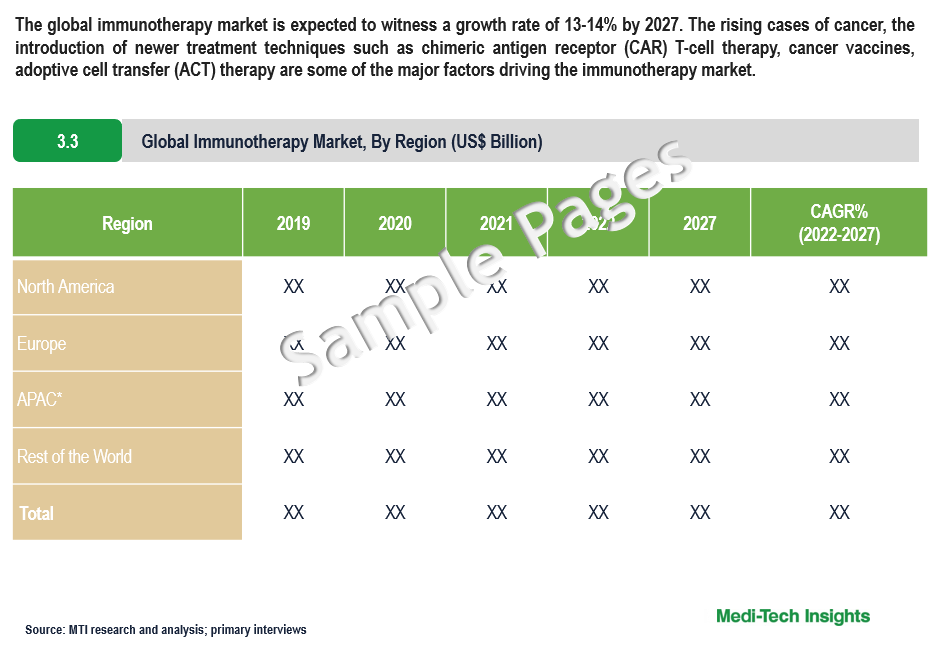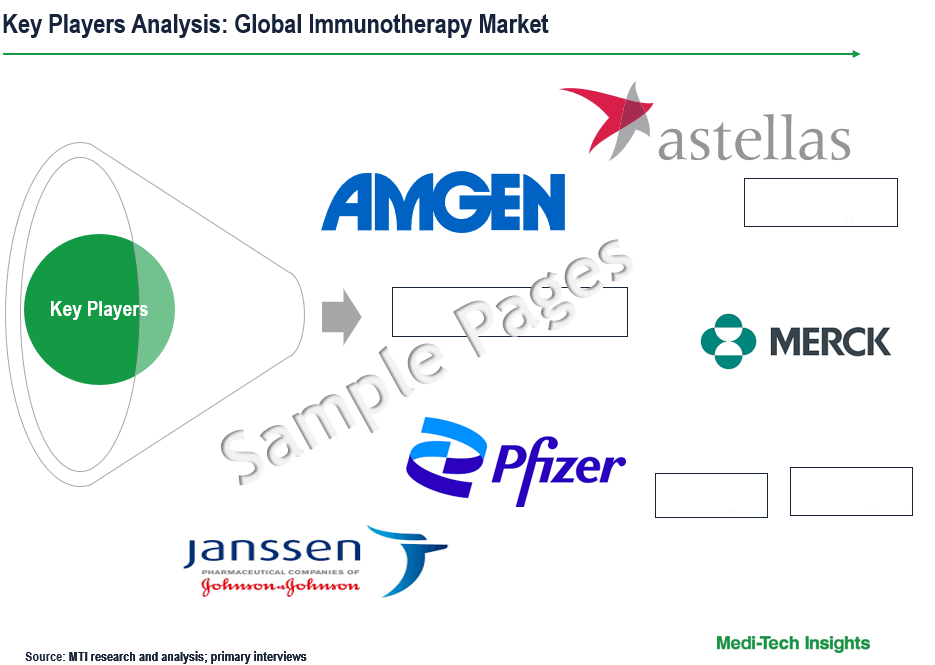
Immunotherapy Market Size, Share, Growth Drivers, Trends & Opportunities by 2027
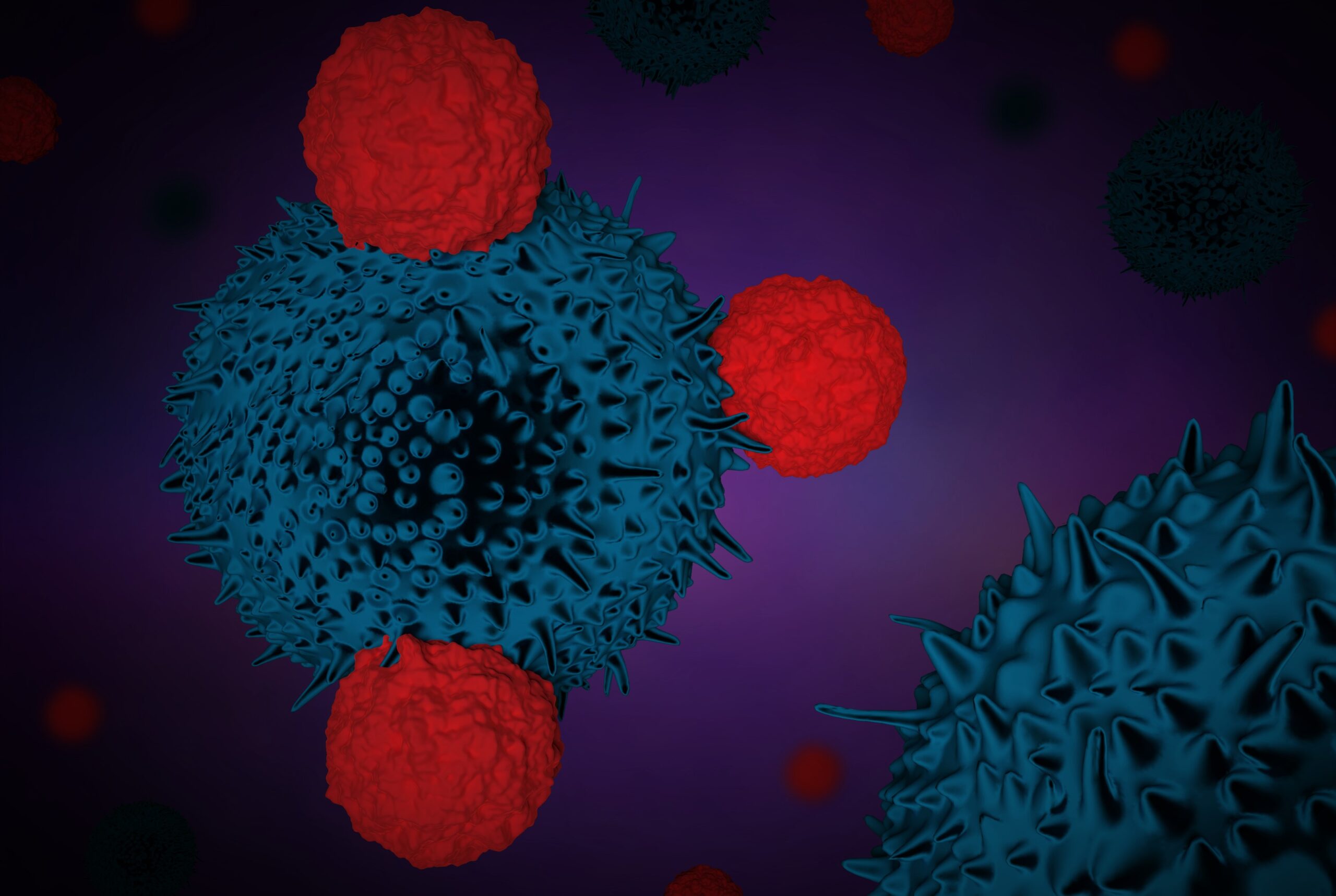
The Global Immunotherapy Market is expected to witness a healthy growth rate of 13-14% by 2027. Growing cases of cancer, the introduction of newer treatment techniques such as chimeric antigen receptor (CAR) T-cell therapy, cancer vaccines, adoptive cell transfer (ACT) therapy are some of the major factors driving the growth of the global market. However, the higher costs of immunotherapy and the presence of alternative affordable treatment like chemotherapy is expected to impact the market growth.
Cancer Immunotherapy refers to treatment that uses the body’s immune system to fight against cancer cells. It works by stimulating the immune system to recognize and attack cancer cells. The treatment either uses substances generated in the body or a laboratory to find cancer cells and fight against these cells. Immunotherapy is used to treat different types of cancer and can be used alone or combined with chemotherapy or other cancer treatments.
Cancer Immunotherapy Market: Key Market Trends
Cancer immunotherapy is rapidly advancing and has now been approved for the treatment of various cancers. Cancer immunotherapy plays an important role in the maintenance of the immune system by targeting the infectious agents that may cause cancer through the production of antibodies.
Some of the trends in Immunotherapy market are as below:
- Combination Therapies: This methodology uses multiple immunotherapeutic drugs in the treatment of cancer. Some therapies have shown promising results in clinical trials and gaining popularity in the treatment of cancer. For instance, in April 2023, U.S. Food and Drug Administration (FDA) granted Astellas Pharma Inc. and Seagen Inc. accelerated approval for using PADCEV® with KEYTRUDA® as a combination therapy for the treatment of adult patients with locally advanced or metastatic urothelial cancer (la/mUC) in the U.S. The indication is approved under accelerated approval based on tumor response rate and durability of response and for patients who are not eligible to receive cisplatin-containing chemotherapy.
- Gene Editing: The advancement in gene editing technology is enabling the development of new immunotherapeutic drugs. For example, CRISPR-Cas9 has become a prominent therapeutic tool in cancer research and clinical trails.
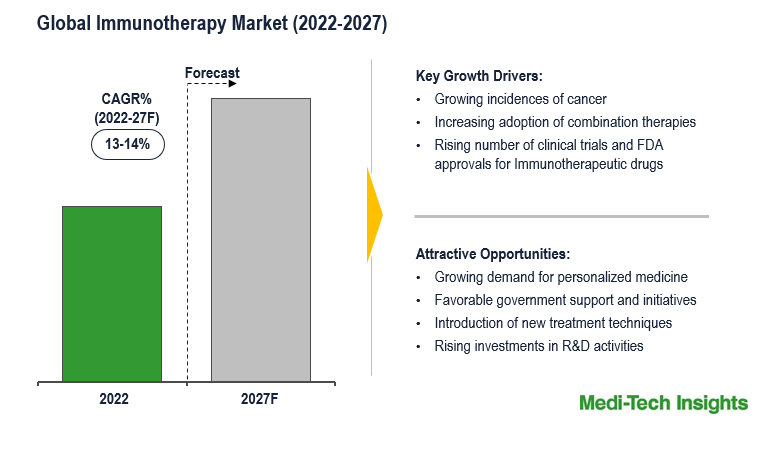
Global Immunotherapy Market: Key Growth Drivers
The rising prevalence of cancer, an increasing geriatric population, and lifestyle changes are some of the key factors driving the growth of the global immunotherapy market. Rising number of clinical trials, and increasing efficacy and accuracy of the new therapies with fewer side effects compared to traditional treatments like chemotherapy, are expected to further drive the immunotherapy market growth. The growing investments by the government in research and development activities, and the introduction of new treatment techniques like chimeric antigen receptor (CAR) T-cell therapy, cancer vaccines, and adoptive cell transfer (ACT) therapy are the other factors fueling the growth of the immunotherapy market in the global market.
For instance,
- In February 2022, the Janssen Pharmaceutical Companies of Johnson & Johnson received approval from the U.S. Food and Drug Administration (FDA) for using CARVYKTI® (ciltacabtagene autoleucel; cilia-cel) for the treatment of adult patients with relapsed or refractory multiple myeloma (RRMM). This treatment will be given to patients, who have received at least one prior line of therapy including a proteasome inhibitor, an immunomodulatory agent, and are refractory to lenalidomide.
Key Market Challenges: Immunotherapy Market
The stringent regulatory environment for immunotherapy and the high cost of these drugs are some of the constraints that are likely to restrain the growth of the global immunotherapy market. The side effects of immunotherapy like fatigue, inflammation and skin reaction are other factors hampering its market growth.
North America is Expected to Continue to Hold a Major Share in the Global Immunotherapy Market
Geographically, North America accounts for a major market share in the global immunotherapy market. This can be mainly attributed to the growing number of cancer patients, rapid adoption of immunotherapy across U.S. oncology practices, the developed healthcare infrastructure, and the presence of key market players in the region. However, the Asia-Pacific region is anticipated to witness a strong growth in the upcoming years, due to rising incidences of cancer and the large geriatric population in the region.
Competitive Landscape Analysis: Immunotherapy Market
Some of the key players operating in the global immunotherapy market are Amgen Inc., Bayer AG, Astellas Pharma Inc., AstraZeneca, Bristol-Myers Squibb, F. Hoffmann-La Roche, Pfizer Inc., Eli Lily and Company, Novartis AG, Johnson & Johnson (Janssen Global Services LLC), and Merck and Co. Inc. among others.
Organic and Inorganic Growth Strategies Adopted by the Market Players to Establish Their Foothold in the Immunotherapy Market
Leading players operating in the global immunotherapy market are adopting both organic and inorganic growth strategies such as upgrading with new technology, launching new products, collaborations, and acquisitions to garner a higher market share in the global market.
For instance,
- In May 2023, Janssen Biotech, Inc., one of the Janssen Pharmaceutical Companies of Johnson & Johnson, entered into a worldwide collaboration and license agreement with Cellular Biomedicine Group Inc. (CBMG) for the development, manufacture, and commercialization of next-generation chimeric antigen receptor (CAR) T-cell therapies for the treatment of B-cell malignancies.
- In May 2023, Sony Corporation and Astellas Pharma Inc., entered into a collaborative research agreement to develop and optimize an Antibody-Drug Conjugate (ADC) platform using SONY’s KIRAVIA Backbone as a linker to effectively deliver anti-cancer drugs to targeted cells.
The global immunotherapy market is expected to gain a further momentum in the coming years due to the growing adoption of new therapeutic treatments and combination therapies, favorable government support, rising investments in research and developments, and aggressive organic and inorganic growth strategies followed by the market players.
Key Strategic Questions Addressed in this Research Report:
- What is the market size & forecast for the immunotherapy market?
- What are the historical, present, and forecasted market shares and growth rates of various segments and sub-segments of the immunotherapy market?
- How has Covid-19 impacted the immunotherapy market?
- What are the major growth drivers, restraints/challenges impacting the global immunotherapy market?
- What are the opportunities prevailing in the immunotherapy market?
- What is the investment landscape of immunotherapy market?
- Which region has the highest share in the global immunotherapy market? Which region is expected to witness the highest growth rate in the next 5 years?
- Who are the major players operating in the market? What is the competitive positioning of key players?
- Who are the new players entering the immunotherapy market?
- What are the key strategies adopted by players in global immunotherapy market?
1. Research Methodology
1.1. Secondary Research
1.2. Primary Research
1.3. Market Estimation
1.4. Market Forecasting
2. Executive Summary
3. Market Overview
3.1. Market Dynamics
3.1.1. Drivers
3.1.2. Restraints
3.1.3. Opportunities
3.1.4. Key Market Trends
3.2. Industry Speaks
4. Snapshot: Key Emerging Immunotherapy Companies
5. Global Immunotherapy Market - Size & Forecast (2019-2027), By Product Type
5.1. Monoclonal Antibodies
5.2. Vaccines
5.3. Checkpoint Inhibitors
5.4. Cell Therapies
5.5. Immunomodulators
5.6. Other Product Types
6. Global Immunotherapy Market - Size & Forecast (2019-2027), By Application
6.1. Prostate Cancer
6.2. Breast Cancer
6.3. Skin Cancer
6.4. Lung Cancer
6.5. Other Applications
7. Global Immunotherapy Market - Size & Forecast (2019-2027), By End User
7.1. Hospitals and Clinics
7.2. Cancer Research Centres
7.3. Other End Users
8. Global Immunotherapy Market - Size & Forecast (2019-2027), By Region
8.1. North America (U.S. & Canada)
8.2. Europe (UK, Germany, France, Italy, Spain, Rest of Europe)
8.3. Asia Pacific (China, India, Japan, Rest of Asia Pacific)
8.4. Rest of the World (Latin America, Middle East & Africa)
9. Competitive Landscape
9.1. Key Players and their Competitive Positioning
9.1.1. Competitive Positioning of Key Players (2022)
9.1.2. Offerings Assessment, By Players
9.2. Key Strategies Assessment, By Player (2021-2023)
9.2.1. New Product & Service Launches
9.2.2. Partnerships, Agreements, & Collaborations
9.2.3. Mergers & Acquisitions
9.2.4. Geographic Expansion
10. Key Companies Scanned (Indicative List)
10.1. Amgen Inc.
10.2. Bayer AG
10.3. Astellas Pharma Inc.
10.4. AstraZeneca
10.5. Bristol-Myers Squibb
10.6. F. Hoffmann-La Roche
10.7. Pfizer Inc.
10.8. Eli Lily and Company
10.9. Novartis AG
10.10. Johnson & Johnson (Janssen Global Services LLC)
10.11. Merck and Co.Inc.
10.12. Other Key Players
The study has been compiled based on extensive primary and secondary research.
Secondary Research (Indicative List)
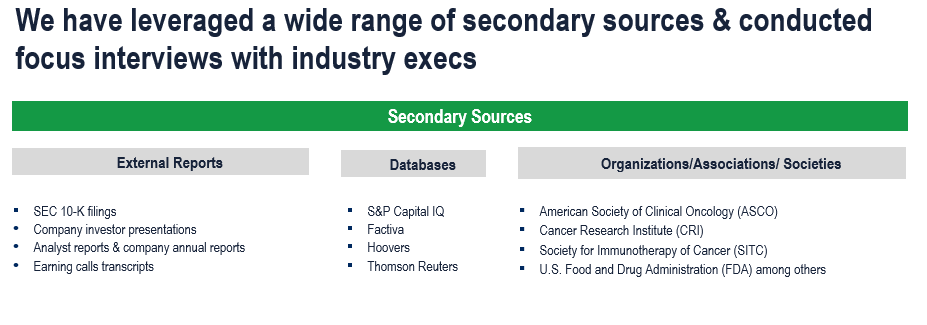
Primary Research
To validate research findings (market size & forecasts, market segmentation, market dynamics, competitive landscape, key industry trends, etc.), extensive primary interviews were conducted with both supply and demand side stakeholders.
Supply Side Stakeholders:
- Senior Management Level: CEOs, Presidents, Vice-Presidents, Directors, Chief Technology Officers, Chief Commercial Officers
- Mid-Management Level: Product Managers, Sales Managers, Brand Managers, R&D Managers, Business Development Managers, Consultants
Demand Side Stakeholders:
- Stakeholders in Healthcare and Clinics, Cancer Research Centers, and Other End Users.
Breakdown of Primary Interviews
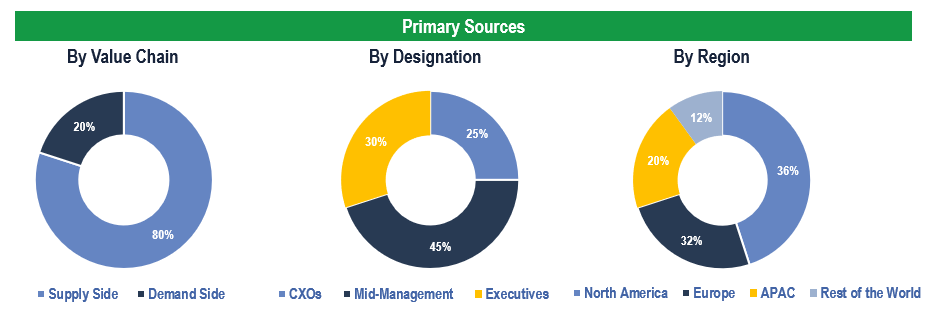
Market Size Estimation
Both ‘Top-Down and Bottom-Up Approaches’ were used to derive market size estimates and forecasts.
Data Triangulation
Research findings derived through secondary sources & internal analysis were validated with Primary Interviews, Internal Knowledge Repository, and Company Sales Data.
